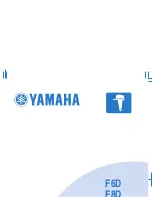
MS6261 User’s Manual
Figure 3-3. BIOS Features Setup Screen
2. Use one of the arrow keys to move between options and modify the selected
options by using PgUp/PgDn/+/-keys. An explanation of the <F> keys follows:
“Help”gives options available for each item.
Changes color.
Resets the previous values. These values are the values
with which the user started the current session.
Loads all options with the BIOS default values.
Loads all options with the Setup default values.
MS6261 User’s Manual
A short description of screen options (Figure 3-3) follows:
CPU Internal Cache
Choose Enabled (default) or Disabled.This option
allows the enabling or disabling of the CPU internal
cache.
External Cache
Choose Enabled (default) or Disabled.This option
allows the enabling or disabling of the external cache
memory.
Quick Power On Self
Test
Choose Enabled (default) or Disabled.This option
speeds up the Power On Self Test routine.
Boot Sequence
Choose “A, C, SCSI”(default), or others.This option
determines which drive to engage first for the
operating system.
Swap Floppy Drive
Choose Enabled or Disabled (default).This option
swaps floppy drive assignments when enabled.
Boot Up Floppy Seek
Choose Enabled (default) or Disabled. In the POST
mode, BIOS will detect the track numbers of the
Installed floppy disk driver. 40 tracks is for 360K type
driver and 80 is for 720K, 1.2M, and 1.44M.
Boot Up NumLock
Status
Choose On (default) or Off. This option activates the
NumLock function at boot-up time.
Boot Up System Speed
Choose High (default) or Low.
Gate A20 Option
Choose Fast or Normal (default). This option allows
the RAM to access the memory above 1MB by using
the fast gate A20 line.
Typematic Rate Setting
Choose Enabled or Disabled (default). Enable this
option to adjust the keystroke repeat rate.








































